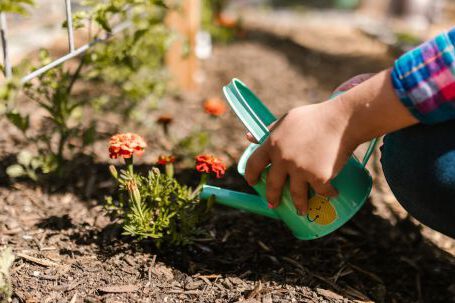As the winter months draw near, it’s time to start thinking about winterizing your garden. Taking the necessary steps to protect your plants and prepare your garden for the cold weather ahead will ensure that your garden thrives come springtime. Here are some important steps to consider when winterizing your garden.
Clear Out Debris
Before winter arrives, it’s important to clear out any debris from your garden. This includes fallen leaves, dead plants, and any other organic matter that may have accumulated over the season. Clearing out debris not only improves the overall appearance of your garden but also helps prevent diseases and pests from overwintering.
Trim and Prune
Next, it’s time to trim and prune your plants. Remove any dead or damaged branches, as well as any overgrown or unruly growth. Proper pruning helps promote healthy growth and reduces the risk of damage from heavy snow or ice. Be sure to research the specific pruning needs of each plant in your garden to ensure you’re doing it correctly.
Protect Delicate Plants
If you have delicate plants that are not winter-hardy, it’s important to protect them from the harsh elements. Consider covering them with burlap or a frost blanket to shield them from freezing temperatures and strong winds. You can also move potted plants indoors or into a greenhouse for added protection. Remember to water your plants thoroughly before covering them to help insulate their roots.
Mulch Your Garden Beds
Applying a layer of mulch to your garden beds is an excellent way to protect your plants during the winter. Mulch acts as a natural insulator, helping to regulate soil temperature and prevent frost heaving. Spread a thick layer of mulch around the base of your plants, being careful not to pile it up against the stems or trunks. This will help retain moisture and provide an additional layer of protection against the cold.
Drain and Store Watering Equipment
As winter approaches, it’s important to drain and store your watering equipment properly. This includes hoses, sprinklers, and irrigation systems. Leaving water in these items during freezing temperatures can cause damage, such as cracked pipes or fittings. Drain all excess water from your equipment and store them in a dry place to prevent freezing and ensure they’re ready for use in the spring.
Clean and Store Tools
Before winter sets in, take the time to clean and store your gardening tools properly. Remove any dirt or debris from your tools and give them a good scrub with warm, soapy water. Dry them thoroughly and consider applying a thin layer of oil to prevent rust. Store your tools in a dry location, such as a shed or garage, to protect them from the elements.
Monitor and Inspect
Throughout the winter months, it’s important to monitor and inspect your garden for any signs of damage or issues. Check for signs of pest infestations, disease, or winter damage. If necessary, take appropriate action to address any problems before they worsen. Regular monitoring will help ensure your garden stays healthy and ready for spring.
Conclusion
Winterizing your garden is a crucial step in maintaining a healthy and thriving garden all year round. By clearing out debris, trimming and pruning, protecting delicate plants, mulching garden beds, draining and storing watering equipment, cleaning and storing tools, and monitoring and inspecting, you can ensure that your garden is ready to withstand the winter months. Taking the time now to prepare your garden will pay off when spring arrives and your garden bursts back to life.




